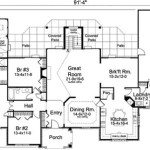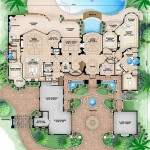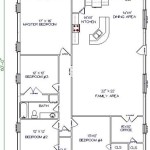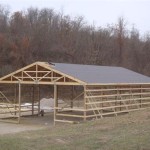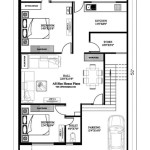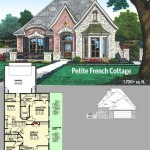House Build Plans And Cost: A Comprehensive Overview
Constructing a new home is a significant undertaking, demanding meticulous planning and a thorough understanding of associated costs. This article provides a detailed examination of house build plans and the factors influencing the overall expense, aiming to equip potential homeowners with the information necessary to navigate the building process effectively.
The journey begins with conceptualizing the desired house and translating that vision into tangible architectural plans. These plans serve as the blueprint for the entire construction project, dictating the structural integrity, aesthetics, and functionality of the dwelling. Consequently, careful consideration must be given to every aspect of the design phase.
Several factors play a crucial role in shaping the final house build plans. These include the intended size and layout of the home, the desired architectural style, the specific site conditions, and local building codes and regulations. Each of these aspects will influence the complexity of the design and, ultimately, the overall cost of construction.
Understanding House Build Plan Stages
The development of comprehensive house build plans typically involves several distinct stages. These stages progress from preliminary sketches to fully detailed construction documents, each serving a specific purpose in the overall building process.
The initial stage involves creating schematic designs. These are broad sketches that illustrate the basic layout of the house, including the placement of rooms, the flow of traffic, and the overall form of the building. Schematic designs are primarily intended for conceptual exploration and client feedback.
Following approval of the schematic designs, the process moves into the design development phase. During this stage, the initial sketches are refined and elaborated upon. Detailed floor plans, elevations, and sections are developed, providing a clearer picture of the finished product. Material selections and preliminary specifications are also established at this point.
The final stage involves the creation of construction documents. These are highly detailed drawings and specifications that provide all the information necessary for the contractor to build the house. Construction documents include structural drawings, mechanical, electrical, and plumbing (MEP) plans, landscape plans, and detailed specifications for all materials and finishes.
It is crucial to engage qualified professionals, such as architects or architectural designers, to develop house build plans. These professionals possess the necessary expertise to create accurate, buildable plans that comply with all applicable regulations. Hiring experienced professionals can minimize potential problems and ensure a smoother construction process.
Selecting the appropriate architectural style is another crucial element in house build plans. Styles can range from traditional to contemporary, each with its own unique characteristics and associated costs. Factors such as roof pitch, window design, and exterior materials can significantly impact the overall aesthetic and budget of the project.
Key Design Elements That Influence Costs
Several key design elements within the house build plans directly influence the overall construction costs. Careful consideration of these elements during the planning phase can help manage the budget and prevent unexpected expenses.
The size and complexity of the house have a direct correlation with the construction cost. Larger homes require more materials and labor, resulting in higher overall expenses. Similarly, intricate designs with complex rooflines, multiple dormers, or unusual shapes can significantly increase the cost of construction.
The choice of materials also plays a significant role in determining the overall cost. High-end materials, such as imported marble, custom cabinetry, or premium roofing, will naturally increase the budget. Selecting more cost-effective alternatives, while maintaining desired quality, can help keep expenses within reasonable limits.
The complexity of the mechanical, electrical, and plumbing (MEP) systems can also impact the cost. Homes with advanced technology, such as smart home automation systems, specialized lighting, or complex HVAC systems, will generally have higher MEP costs. Optimizing the design of these systems can help reduce overall expenses.
Foundation type also matters. Slab foundations tend to be less expensive than crawlspace or basement foundations, due to the excavation and structural complexities involved. The choice depends on soil conditions, geographic location, and preference. Basements are more common in colder climates due to frost line considerations and their potential use as living space.
Furthermore, the location of the building site can impact costs. Sites with unusual topography, unstable soil conditions, or limited access can require additional site preparation, such as grading, excavation, or retaining walls, which will add to the overall expense.
Understanding the Breakdown of House Building Costs
The overall cost of building a house is comprised of several components, each contributing a significant portion to the total expenditure. Understanding these components is essential for effective budget management.
Direct costs are expenses associated with physical labor and materials needed to construct the house. This category includes framing, roofing, siding, windows, doors, insulation, and interior finishes. Material costs are often affected by market variables, such as supply chain issues and fluctuating commodity prices.
Indirect costs include expenses that are not directly related to labor and materials but are essential for the project's completion. These expenses typically comprise permits, utility connection fees, insurance, architectural and engineering fees, and project management costs.
Land acquisition costs can vary significantly depending on location and market conditions. Urban or suburban areas generally have higher land prices than rural regions. Additionally, the size and features of the lot will influence its value. Consider costs associated with site clearing, grading, and any required infrastructure improvements.
Contingency funds are also crucial. A contingency budget of 10-20% of the construction cost can provide you with a safety net. This budget is intended to handle unexpected issues such as unforeseen site conditions, design changes, or material price increased. A solid cushion prevents the project from going off budget due to unforeseen circumstances.
Labor costs vary widely, depending on location, the skills of the workers, and the complexity of the project. It’s advisable to obtain quotes from multiple contractors and subcontractors to ensure competitive pricing. Factors like seasonality can influence labor availability and costs.
Financing costs, such as construction loans or mortgages, should also be factored into the overall budget. Interest rates and loan terms can significantly impact the total cost of the project. Obtain pre-approval for financing to understand the budget constraints before embarking on construction.
Accurate cost estimation requires careful research, detailed planning, and consultation with experienced professionals. Obtain multiple quotes from builders, subcontractors, and suppliers, and thoroughly review each estimate to ensure that all necessary items are included. Utilizing cost estimating tools and resources can also aid in creating a realistic budget.
Choosing the right builder is one of the most important decisions in the home construction process. A reputable builder will have a strong track record, solid references, and a transparent pricing structure. It’s advisable to check online reviews, speak with past clients, and verify licenses and insurance before signing a contract. The contract should clearly spell out the scope of work, payment schedule, and dispute resolution mechanisms.
Effective project management is crucial for staying on schedule and within budget. Frequent communication with the builder, regular site visits, and meticulous record-keeping are essential. Consider hiring a project manager to oversee the construction process and ensure that it aligns with the approved plans and budget.
Building a house is a complex and multifaceted process that requires careful planning and attention to detail. By understanding the various factors that influence house build plans and costs, potential homeowners can make informed decisions and navigate the construction process with confidence. While challenges may arise during the project, thorough preparation and effective communication can contribute to a successful and rewarding outcome.

House Plans And Cost Low Floor Housing

Est House Plans To Build Simple With Style Blog Eplans Com

Estimated Cost To Build Report Information House Plans And More

House Plans With Cost To Build The Plan Collection

16 Cutest Tiny Home Plans With Cost To Build Craft Mart

Charming Farm House Style Plan 7377 High Meadow Cabin

Get The Lowdown On Cost To Build Estimates Houseplans Blog Com

Affordable Home Plan Ch137

Est House Plans To Build Simple With Style Blog Eplans Com

Get The Lowdown On Cost To Build Estimates Houseplans Blog Com

